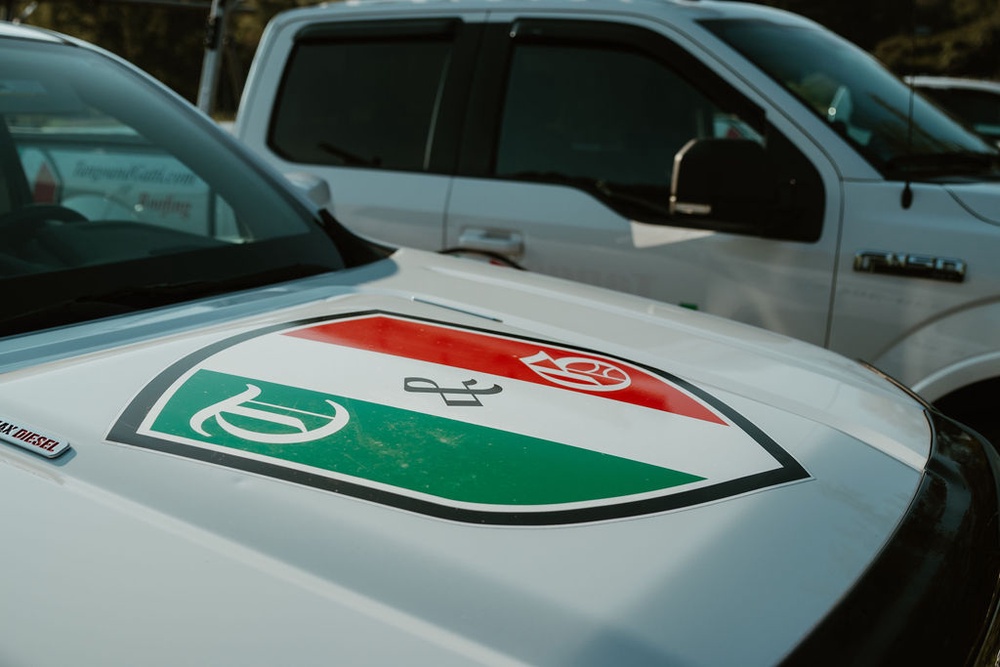

Have questions about your home improvement project? You're not alone! At Tango & Gatti, we’ve gathered the answers to the most common questions our customers ask. Explore our FAQ to find the information you need and feel confident about your next step in protecting your home.
Insurance Claims
Insurance companies typically cover damage caused by natural events like hailstorms, hurricanes, or tornadoes as well as accidents like a falling branch or debris or similar types of incidents.
Calling Tango and Gatti first will allow you to better determine if a claim needs to be filed. The insurance company ultimately has the final decision on approval, but with our on staff licensed adjusters, who are HAAG trained and certified, we can provide you with a very clear expectation.
Yes, our inspectors can be present when your insurance adjuster arrives to inspect the damage. We’ll ensure that all areas of concern are addressed in the final report, helping to make sure you receive the full compensation needed for quality repairs or replacement.
The amount a policy holder receives for payout is largely based on the amount of damage done to your property, the specifics of your policy, and the standards of the insurance company you selected.
When dealing with the insurance claim, the insurance company will write the estimate based in accordance with what your policy specifics are. If additional damage is found after the adjuster has been out, adjustments can be made through what is called the “supplemental” process. It very important to remember when choosing your contractor, to check their reviews and most importantly, if licensing is required in your area, make sure they were holding a license prior to the date of the storm. This ensures that you live in their normal service area.
Roofing
Common signs include leaks, missing or torn shingles, and loose or damaged flashing around vents, chimneys or skylights. Excessive granule loss in the gutters can also indicate wear, as can spots or stains on your ceilings caused by water infiltration. Additionally, if your roof is 20+ years old, it may be nearing the end of its lifespan.
Choosing the right roofing material depends on factors like your budget, style, preferences, and needs. It’s important to factor in the materials lifecycle costs—while some options may have higher upfront costs, they often require less maintenance and last longer. For example, asphalt roofs typically last around 30 years and are more affordable initially, whereas metal roofs have higher upfront costs but can last over 50 years, offering great long-term value.
Hail damage isn’t always easy to spot, and while you might notice some visible strikes from the ground, most damage requires a trained eye to identify. If your area has experienced hail, please contact us. We would be happy to assist you by sending out one of our professional inspectors to assess any potential damage.
This depends on factors like shingle quality, local weather conditions, and installation methods. Typically, you can expect a 3-tab shingle to last around 25 years, while a higher quality architectural shingle can last 30 years.
The lifespan of a metal roof depends on its quality, but high-quality roofs like standing seam and metal shingles can last over 50 years. Their exceptional durability is one of the key reasons why homeowners choose them.
Most residential roofs can be installed in a single day. If the project takes longer, we ensure the site is cleaned and secured each day, with all vulnerable areas protected from the weather until the job is finished.
Absolutely. After completing your roofing project, we conduct a thorough cleanup and walkthrough to ensure your property is spotless. We don’t consider the job done until you’ve approved the final cleaning and are completely satisfied with the results.
We exclusively use Owens Corning Duration Line shingles, renowned for their exceptional quality, outstanding weather protection, and wide range of colors to compliment any home’s style.
As a Platinum Preferred Contractor, we are proud to offer workmanship warranties ranging from 10-25 years. This is a testament to the exceptional quality of our craftmanship and installation methods.
Yes, we carry insurance. We believe every contractor should be both insured and licensed, as it reflects their legitimacy, competence, and readiness to address any damage or injuries that could arise during a project. This not only protects the homeowners from potential liabilities, but also guarantees that the work will meet industry standards. Carrying insurance demonstrates our commitment to reliability, accountability, and delivering quality work with professionalism and care.
Yes, asphalt shingles can be installed during colder months, but it’s best to schedule installation when temperatures are 40 degrees or higher. This ensures the shingles seal properly and prevents them from becoming brittle or prone to damage. Metal, on the other hand, can be installed year-round provided weather conditions allow for safe access to the roof.
We understand the importance of helping you complete your project as quickly as possible. We strive to respond to all inquiries the same day we receive them.
Yes, we work on all roof slopes. It is important to use the correct materials for each slope. If the slope is too shallow or too steep, state code requirements change and we strictly adhere to all local and state code requirements.
Siding
Choosing the best siding material for your home involves considering several factors. Common options include vinyl, wood, metal and fiber cement, each suited to different needs. Your choice may depend on factors such as climate, appearance, durability, maintenance requirements and energy efficiency. In addition, you may also want to think about your budget and how long you plan to stay in your home.
Painting wood siding every few years can be extremely costly over the lifespan of your home. In comparison, low maintenance siding offers a much more affordable long-term solution. With a lifespan lasting several decades, the initial investment in siding pays for itself quickly through reduced upkeep and savings over time.
Vinyl siding requires very little maintenance. However, to keep it looking its best, it is recommended to wash it occasionally with mild soap and a garden hose or have it soft-washed by a professional. This helps remove dirt and maintain its appearance without the need for frequent upkeep.
Insulated vinyl siding has a layer of foam insulation attached to its backside. This added layer helps improve energy efficiency by reducing heat loss, keeping your home warmer in the winter and cooler in the summer. It also helps lower energy costs by enhancing the overall insulation of your home.
Fiber cement is a durable building material used on the exterior of homes and buildings. It is made by combining cement, sand, and cellulose fibers to create a strong, low maintenance surface. Known for its durability, insulating properties and appealing appearance, fiber cement siding offers a long-lasting solution for residential and commercial exteriors.
Windows
Replacing your windows is a smart choice if they are damaged, difficult to operate or letting in drafts. The U.S. Department of Energy reports that windows can account for over 30% of heat loss in a home, so upgrading can improve energy efficiency. New replacement windows are durable, help lower energy costs, reduce maintenance, increase your home’s value and enhance its overall look, both inside and out.
Choosing high-quality, energy efficient replacement windows with insulated frames and energy-efficient glass can effectively prevent heat and cold from entering or leaving your home year-round. With vinyl or fiberglass windows, maintenance is minimal—no scraping or painting required! These energy and maintenance savings can help you recoup the cost of your new windows within just a few years.
Any replacement window you buy should have a label from the National Fenestration Rating Council (NFRC). The NFRC sets industry standards for rating the energy performance of windows through rigorous testing. Manufacturers participating in this program must label each window with its specific thermal performance level, ensuring that customers can select products that meet their energy requirements.
Insulated glass units (IGU’s) are designed to enhance the energy efficiency of your windows. They consist of two or more panes of glass, separated by a spacer and sealed at the edges. The space between the panes is typically filled with air or a noble gas like Argon or Krypton. This type of glass helps keep homes warmer in the winter and cooler in the summer by reducing heat transfer, which can lower energy costs.
Low-E glass, or low emissivity glass, features a thin, nontoxic coating that enhances the glass’s thermal efficiency. This coating reflects ultraviolet and infrared light, reducing radiant heat emissions. Low-E glass boosts energy efficiency in several ways: It will keep your home warmer in the winter and cooler in the summer, and it improves natural lighting. Additionally, it can help furniture and carpets from fading, by blocking harmful ultraviolet radiation from entering your home.
Ready to get started?
4005 Johnstown Rd NE,
Dover, OH 44622
(330) 308-8213
M-F, 8:00am - 5:00pm
Weekends and Evenings by appointment
Helpful Links
Find us on social media!
© 2024 Tango & Gatti. All rights reserved.